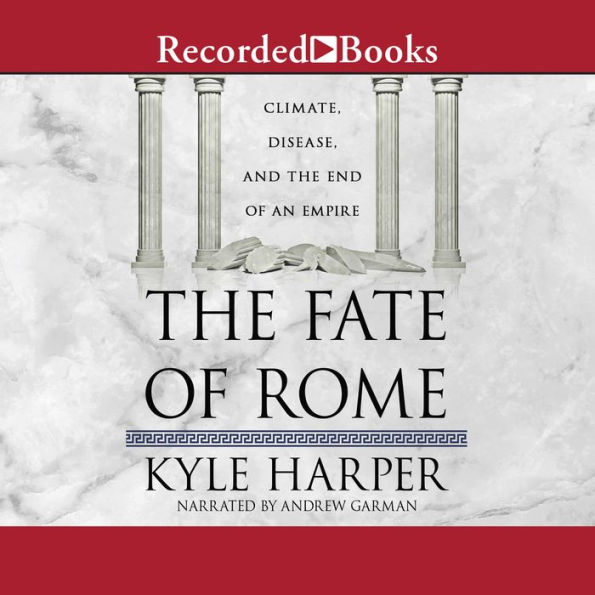"Ingenious, persuasive. . . . Lucidly argued."
How devastating viruses, pandemics, and other natural catastrophes swept through the far-flung Roman Empire and helped to bring down one of the mightiest civilizations of the ancient world
Here is the monumental retelling of one of the most consequential chapters of human history: the fall of the Roman Empire. The Fate of Rome is the first book to examine the catastrophic role that climate change and infectious diseases played in the collapse of Rome's power-a story of nature's triumph over human ambition. Interweaving a grand historical narrative with cutting-edge climate science and genetic discoveries, Kyle Harper traces how the fate of Rome was decided not just by emperors, soldiers, and barbarians but also by volcanic eruptions, solar cycles, climate instability, and devastating viruses and bacteria. The Fate of Rome is a sweeping account of how one of history's greatest civilizations encountered and endured, yet ultimately succumbed to, the cumulative burden of nature's violence.
1125843939
Here is the monumental retelling of one of the most consequential chapters of human history: the fall of the Roman Empire. The Fate of Rome is the first book to examine the catastrophic role that climate change and infectious diseases played in the collapse of Rome's power-a story of nature's triumph over human ambition. Interweaving a grand historical narrative with cutting-edge climate science and genetic discoveries, Kyle Harper traces how the fate of Rome was decided not just by emperors, soldiers, and barbarians but also by volcanic eruptions, solar cycles, climate instability, and devastating viruses and bacteria. The Fate of Rome is a sweeping account of how one of history's greatest civilizations encountered and endured, yet ultimately succumbed to, the cumulative burden of nature's violence.
The Fate of Rome: Climate, Disease, and the End of an Empire
How devastating viruses, pandemics, and other natural catastrophes swept through the far-flung Roman Empire and helped to bring down one of the mightiest civilizations of the ancient world
Here is the monumental retelling of one of the most consequential chapters of human history: the fall of the Roman Empire. The Fate of Rome is the first book to examine the catastrophic role that climate change and infectious diseases played in the collapse of Rome's power-a story of nature's triumph over human ambition. Interweaving a grand historical narrative with cutting-edge climate science and genetic discoveries, Kyle Harper traces how the fate of Rome was decided not just by emperors, soldiers, and barbarians but also by volcanic eruptions, solar cycles, climate instability, and devastating viruses and bacteria. The Fate of Rome is a sweeping account of how one of history's greatest civilizations encountered and endured, yet ultimately succumbed to, the cumulative burden of nature's violence.
Here is the monumental retelling of one of the most consequential chapters of human history: the fall of the Roman Empire. The Fate of Rome is the first book to examine the catastrophic role that climate change and infectious diseases played in the collapse of Rome's power-a story of nature's triumph over human ambition. Interweaving a grand historical narrative with cutting-edge climate science and genetic discoveries, Kyle Harper traces how the fate of Rome was decided not just by emperors, soldiers, and barbarians but also by volcanic eruptions, solar cycles, climate instability, and devastating viruses and bacteria. The Fate of Rome is a sweeping account of how one of history's greatest civilizations encountered and endured, yet ultimately succumbed to, the cumulative burden of nature's violence.
25.99
In Stock
5
1

The Fate of Rome: Climate, Disease, and the End of an Empire

The Fate of Rome: Climate, Disease, and the End of an Empire
FREE
with a B&N Audiobooks Subscription
Or Pay
$25.99
25.99
In Stock

Editorial Reviews
Product Details
| BN ID: | 2940171227319 |
|---|---|
| Publisher: | Recorded Books, LLC |
| Publication date: | 10/24/2017 |
| Edition description: | Unabridged |
Videos


From the B&N Reads Blog
